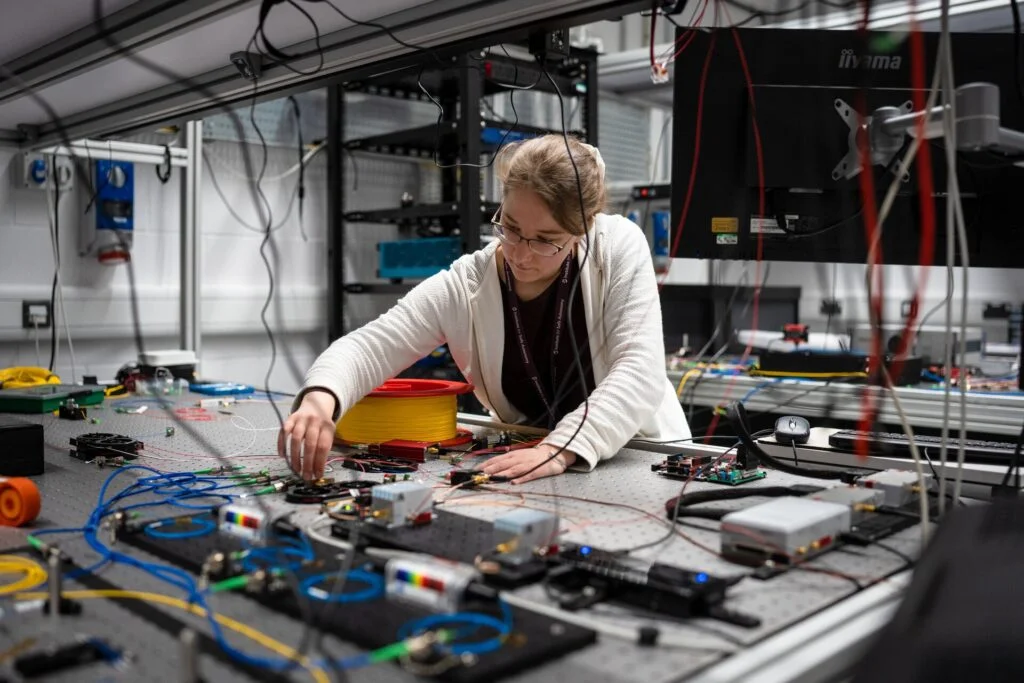How Asia Pacific is Leading the Way in Quantum Cryptography Advancements
SOURCE: HTTPS://CITYLIFE.CAPETOWN/
NOV 06, 2023
First quantum communications link tested between UK and Ireland
SOURCE: HTTPS://TECHMONITOR.AI/
OCT 03, 2023

The fibre optic cable used by researchers from the University of York’s Institute for Safe Autonomy forms part of a new 224km network between Portrane in Ireland and Southport in the UK. It is owned and operated by infrastructure provider euNetworks and is one of the newest commercial optical fibre systems in the region.
This was the longest stretch of fibre-optic cable ever to be used to enable quantum communications underwater. The goal was to tackle the issue of data leakage at a distance when information is encoding for quantum communication and test future infrastructure for a quantum internet once quantum hardware is commonplace.
Quantum communications uses the principle that particles of light can transmit data along optical cables in a fragile state. This means that the particles collapse if interfered with by someone trying to manipulate or steal data. The problem is over a long distance this data can decay, break down and leak, leading to data corruption at the end of the line.
Professor Marco Lucamarini, research lead from the University of York team, explained that many large companies and organisations are interested in quantum communications to secure their data, but the distance issue has to be solved. “The longer the distance, the more likely it is that photons – the particles of light that we use as carriers of quantum information – are lost, absorbed or scattered in the channel, which reduces the chances of the information reaching its target.”
This is a significant problem if organisations want to send private data across borders, particularly for the UK, which is on an island and needs to utilise underwater cables to send data to mainland Europe or the US. To solve the problem, Lucamarini and his team were able to exploit the new cable system between Southport and Portrane.
Efficiencies in the cable’s design – it is a true fibre optic link from end-to-end and is built with highly sensitive detectors at the Southport endpoint to reduce interference – improved the quality of the data transmission.
The transfer happens at light speed, significantly ramping up the rate data can be sent from point to point. Lucamarini said: “This is a truly exciting step forward in realising the full potential of quantum communications and for the future of securing private data in an environment that is shaping the so-called ‘quantum internet’.”
Running the experiment on a commercial-grade cable also allowed the researchers to advance the real-world integration of quantum communication technology into existing global telecommunications infrastructure. Having access to quantum secure data is vital for the future of information security, as logical quantum computers will be able to hack existing encryption methods and steal data in storage and in transit.
Paula Cogan, CEO of euNetworks, said the experiment pushes the boundaries of quantum technology and has implications for the future of network security and infrastructure. “The successful integration of quantum technology over commercial-grade optical fibre infrastructure at this distance is an exciting step forward. Rockabill, and the euNetworks’ network it is part of, provide the ideal platform for new and progressive technologies that will enhance and innovate future network infrastructure.”
There will be more experiments on the same line in the future to test the full range of quantum cryptography, communications and data to prepare for a quantum computing future where data not encrypted using post-quantum technology is all but unsecured.
There are also experiments in and around London to secure data transmission between banks and data centres. This is part of a BT project to create a quantum network in the capital that could connect financial institutions to their server halls.
LATEST NEWS
WHAT'S TRENDING


Data Science
5 Imaginative Data Science Projects That Can Make Your Portfolio Stand Out
OCT 05, 2022

SOURCE: HTTPS://CITYLIFE.CAPETOWN/
NOV 06, 2023
SOURCE: HTTPS://WWW.SCIENCEDAILY.COM/
OCT 27, 2023
SOURCE: HTTPS://WWW.SCIENCEDAILY.COM/
OCT 26, 2023
SOURCE: HTTPS://THEQUANTUMINSIDER.COM/
SEP 28, 2023
SOURCE: HTTPS://SCITECHDAILY.COM/
AUG 29, 2023
SOURCE: HTTPS://WWW.DIGITALJOURNAL.COM/
AUG 26, 2023
SOURCE: HTTPS://WWW.TECHTIMES.COM/
AUG 16, 2023
SOURCE: HTTPS://WWW.SCIENCEDAILY.COM/
AUG 09, 2023